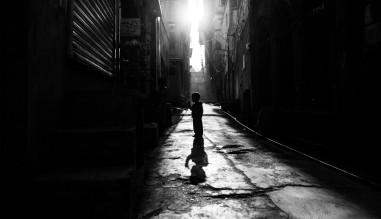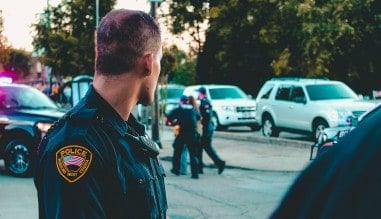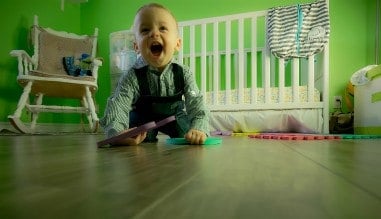Almost every day we read about a child being abducted, beat up by someone, or abused. It is terrible when these
Most parents teach their kids some aspects of personal protection, such don’t talk to strangers, never get into a strangers car, or don’t accept anything from a stranger. And those are good superficial tools to know and use. However not all bad encounters are with someone they do not know, and you do not want your child to grow up learning not to be friendly.
SKIP AHEAD
What Can You Do?
So what can you do as a parent to teach your child personal protection skills without making them scared of
We all know that the best means to survive a bad situation is to be as prepared as possible. Thus, it is never too early to begin the process of teaching your kids the fundamental skills of personal protection. The essential basic skills of personal protection are: Utilizing situational awareness, knowing good hand to hand or self defensive techniques, having a personal protection toll available and knowing when and how to use it, and finally having emergency response plans for selected scenarios.
Also Read: Winter SHTF – Keeping Your Family Alive
Naturally, small children are not going to be able to comprehend the reason you are teaching them these skills and will not be able to understand all the tactics. So they must learn by example, from you. So this part of the process means including your child your everyday personal protection procedures.
As you have hopefully learned, Situational Awareness is the number one skill you must have in order to know your surroundings, make threat assessments and determine actions. So the first step in teaching your child personal protection skills are to teach them Situational Awareness. How do you do that… Well… let’s look at some examples. First, if you as parent do not have any training in Situational Awareness then this can be a family event that will be good for everyone.
Step 1.
You first start with actions that take place inside the house. Simple daily things such as opening the door should be
And finally, practice and practice these skills by every time you are out discussing with your child what is going on around them. Such as, Wow did you see that really cool car? Did you notice that family walking their dog? Lead me to our car using the safest route. These are just a couple very simple examples of things you can do with your child to encourage them to pay attention around them. It may save their life.
Another way to teach your child Situational Awareness, is anytime you are about to exit your car, you and your child take a look around to see if everything is ok to get out. Same when exiting a store, prior to walking straight to your car, you should stop just outside the store then you and your child survey the parking lot to look for potential threats. Naturally, you do not present it to them as looking for “threat” it is much better to present it to them as “making sure everything is safe”.
Where Are The Exits?
Another practice teaching moment should be when out eating dinner… you can ask your child to point to all the exits, and briefly discuss which one the easiest to get to if something should happen and the need to get out. So teaching them this basic skill is a great start to them learning personal protection tactics. This can be done at a very early age, kids as young as 2 like playing games and this can be taught as a form of game.
This next evolution is going to be much harder. It is imperative in my opinion that parents work to teach their kids the dangers of texting and talking on their phones when they should be playing attention to their surroundings. The hardest part of teaching your kids about this danger is to live by the same rule yourself. So in essence this is good training for the whole family.
I feel strongly it is two of the worst things you can be doing in a public place is talking or texting on your phone. As a test in many locations I have seen how close I might be able to get to a person before they know I have gotten within a yard or so of them. Most were on their phones, some had ear buds in and others were just in oblivious to the world, all were in extreme Condition White. Condition White, basically, is when you are oblivious to your surroundings. In ALL cases I was within a danger zone of being close to them and NONE of them knew it. And you wonder how people become victims in the most open and populated spaces and never saw it coming. Easy — they were not paying attention at ALL.
So in order to teach your kids the dangerous hazards of being oblivious to the world around them, I encourage three training tools. First, stop it yourself; teach by example and practice your Situational Awareness skills. Again, not to make your child feel scared, that would be wrong, but to show your child the confidence that comes from always taking the basic steps to enhance safety. Secondly, I would share with them videos on YouTube that illustrate people getting in trouble by being on their phone.
Call 5-0
All children should be taught that it is very acceptable to call the police if they feel in danger or see anything where
Self defense skills are the next step in this process. And again they can be taught at a very young age, kids as young as 4 and 5 are taking and actively participating in self defense classes. There are a number of self defense martial arts and most are very good. However, I am partial to Krav Maga and I think it is the best for personal protection self defense.
Related: Family Survival
Martial Arts training is far more than just self defense training for children and it is well worth the investment. Martial Arts programs teach discipline, self control, confidence, respect and many other very valuable life skills. So choosing any one of them will be of value. As I said, I favor Krav Maga because not only is it an outstanding self defense skill but is a physical training program that is an excellent form of exercise. But it is truly taught with the idea that you are learning this skill to protect yourself. It is not so much as about breaking boards, stances, rituals it is all about how do you in and bad situation protect yourself to the best of your ability.
Krav Maga is a more of a combative self defense training program that teaches you that if you are attacked, then you should go on the offensive quickly in order to subdue the attacker. Thus, this is known as get ugly early. The value of this type of training is that it gives kids a sense of confidence that if they are in a bad situation they have training to hopefully get out of it. In particular, when it comes to fighting off an attacker where quick action and implementation is the key to survival. I have learned there is a wide range of instructors in this discipline. As with any instructional course, there may be different styles of teaching and variations of programs offered. Thus, like any other course you are taking you should research the instructor and observe there training programs before joining and signing your child up as a student.
Next, I think all children should learn about firearms. Not that you expect them at a young age to use one for personal protection, but it is the first step in the process. Just like you teach your child the benefits and dangers of other hazardous items in your house, such as knives, the stove, hammers, and cutting tools, you need to take the same time to instruct your child about firearms. If you are not comfortable with doing that then there are many NRA courses for kids and in most states the Fish and Wildlife Game Department will offer Hunter Safety courses. These are all good starting points if you do not feel comfortable. I know numerous kids at the young age of 7 and 8 some younger, that know about firearms and have even been hunting and harvested game. Learning about firearms is a life lesson. As you never know when you child will be exposed to them without your knowledge and you want them to be trained on what to do in those cases.
Crawl, Walk, Shoot
As I have mentioned before, I work at a big box sporting goods store. The other day a customer came in a wanted
On the other hand, there are numerous cases where children have used a firearm to protect themselves and others. Naturally, this is not the norm, but it does and has happened. But most importantly, teaching children at a young age about firearms I feel decreases the likelihood of accidents and sets the stage for them to be more comfortable with them as they get older.
The final step in teaching children about personal protection and self defense tactics is to have emergency plans. Every family should have at least these four plans and everyone should know them well. First, a fire plan, what do to if the house catches on fire. Secondly, a home invasion plan, this plan would also include what to do if you arrived home and someone is in the house. Thirdly, a bad weather plan, what should everyone do should there be a weather emergency. Can’t Get Home Plan, everyone should know that getting home is not always the best choice, finding a safe haven may be much better. Each of these plans should be well drawn out and practiced. No plan is a plan if it is not designed and practiced.
Also Read: Summer Prep for Kids
Here are some details that should be included in each plan. Fire Plan, how to sound an alarm, verify all exits are clear, have drop down window ladders for upstairs, have a designated meeting spot once outside. Home invasion plan, develop safe rooms, make sure all inner doors lock, make sure everyone knows where and how to hunker down, and never enter the house if you suspect someone you do not know is in there. Bad Weather Plan, have a delegated weather proof safe room, understand it is not always important to get home, develop safe havens (places you can go when you cannot get home). Pack and place Get Home Bags in every vehicle make sure you have keys to save havens and the folks there know you may be there when a bad event occurs. I understand it sounds like a misnomer to call a bag a Get Home Bag that is intended for use when you can’t get home. To clarify it is a bag designed and filled with items you most likely will need until you do Get Home.
Overall, it is equally important to train you child as train yourself. Personal protection is as much a family effort and an individual one. Everyone participating and practice will improve your chances of surviving a bad event. So wait no longer and set the process in place for training your kids.
Final Note: Again thanks to Kurt M for his editorial review that only makes these articles better.







